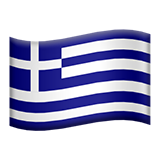
Ulgener
The book about the Gencon 22 charter party, which has been worked on for many years by Professor Fehmi Ülgener especially coupled with his post at the Documentary Committee of Bimco, was released at the beginning of March.
The book consists of two main sections:
The first part of the book examines the Gencon 22 charter party in detail, revealing the reasons for the clauses and providing a broad perspective by comparing it with the Gencon 94 and 76 forms. As is known, the Gencon 22 charter party, which Mr. Ülgener personally participated in preparing, is one of the most widely used standard contracts in dry bulk shipping.
Many significant changes have been made with the Gencon 22 charter party. In particular, the shipowner's liability system has been completely renewed and brought into line with the liability system that will arise from bills of lading by directly referring to the Hague-Visby Rules.
In the second part of the book, the developments that have emerged in recent years regarding voyage charters are explained in parallel with English court decisions; it is possible to summarize the relevant headings and the decisions explained, which are important to know in terms of practice, as follows:
Damages arising from the late arrival of the ship to the loading port (the Pacific Voyager, 2018) The execution of the voyage charter party contract begins not from the start of loading, but from the ship's departure from her location towards the loading port. Any delay during this period can result in consequences against the shipowner, independent of the termination clause in the charter party, the shipowner may be liable to compensate the charterer for damages suffered due to this delay.
Demurrage and Delay Damages (“demurrage vs damages for detention”) The relevant section clarifies under which circumstances the shipowner can claim demurrage fees and under which circumstances they can claim actual damages arising from delays when the ship stays at the port longer than agreed in the charter party.
Arrival of the Ship (“arrived ship”) It is important to determine when the ship has arrived at the port in order to calculate waiting times during the execution of the voyage charter party contract. This section explains the point of arrival in this regard.
Force Majeure and Frustration of Contract (“doctrine of frustration”) Force majeure terminates the obligations of both parties arising from the contract. However, the concept of force majeure does not exist in English law; instead, a similar concept called “frustration” is present. This section evaluates this issue and explains the differences between the two concepts with examples.
Safe Port and Safe Berth Concepts (the Reborn, 2009, MT Athos I 2020) Although these concepts have been discussed and explained for years, recent cases have examined whether the party responsible for these concepts is liable for fault or strict liability. This section shows the final point reached on this issue and discusses the liability systems.
Termination of the Charter Party by the Charterer (the MTM Hong Kong, 2015, the Golden Victory, 2007) The charterer can terminate the charter party contract for a justified reason, and in some cases (especially when the freight rate significantly drops after the contract is made), they may have to withdraw from the contract. The difference between these situations is that in the case of justified reason, the charterer does not have to pay any compensation to the shipowner, whereas in the case of withdrawal, the charterer is liable to compensate the shipowner for damages. This section examines both situations and explains how the compensation to be paid in the case of withdrawal is calculated in parallel with the principles of English law.
Shipowner's Liability for Damages to Cargo (the Limnos, 2008, the Thorco Lineage 2023, the Giant Ace, 2023, the CMA CGM Libra 2021, the Hill Harmony 2001, the Tasman Pioneer 2007, the Lady M case 2019, the Eurasian Dream, 2002, the Volcafe, 2018) This section re-examines the frequently encountered disputes in maritime trade law in parallel with current case law. Some of these court decisions have examined which types of damages should be considered in terms of limiting liability, especially explaining the concept of “goods lost or damaged” while others have provided solutions regarding the starting point of the limitation period. Another decision has accepted that starting the voyage with a faulty passage plan is a violation of the shipowner's obligation to make the ship seaworthy. This court decision states that the fault in the passage plan does not necessarily make the ship unseaworthy; for this, the fault in the passage plan must be significant enough to make the ship unseaworthy, and there must be a causal link between the fault in the passage plan and the damage caused. This decision, which is examined in detail in the book, has a significant impact on maritime trade. Due to this decision, shipowners need to prepare their passage plans and documentation much more carefully and meticulously before the voyage. In this regard, compliance with the rules set by IMO in November 1999 regarding “Passage Plan” has gained importance.
Charter Party – Bill of Lading Relationship (the Starsin, 2004) This section examines and resolves the issue of who is considered to have made the transportation commitment for the cargo loaded on the ship as a result of the charterer's sub-carriage contract with the parties to the charter party contract.
Sanctions Sanctions are one of the problematic issues in international trade today. The final section of the book examines court decisions on this issue and aims to enlighten the reader about sanctions (Lamesa Investment – Synergy, 2020, Mamancochet Mining Limited – Aegis Managing Agency, 2018, Gravelor Shipping-GTLK Asia M5, 2023, MUR Shipping BV RTI Ltd 2024).



